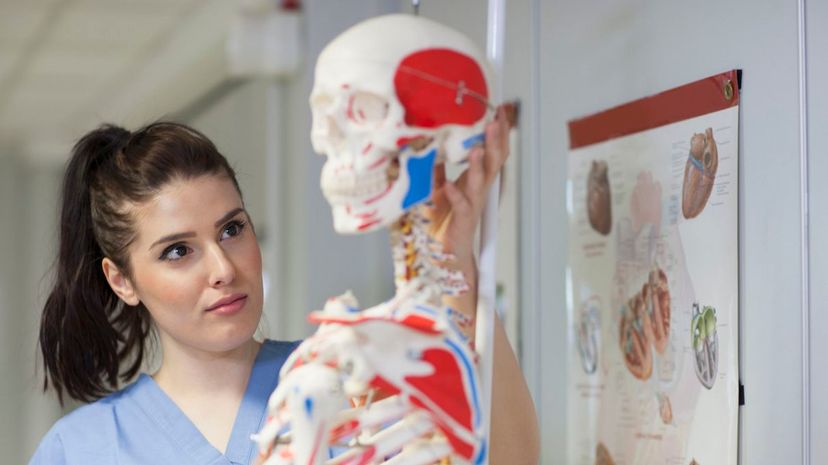
About This Quiz
You have a special event coming up, and like clockwork, you end up getting a really nasty cold. After taking everything you can find, you finally drag yourself into the doctor's office, hoping for any kind of relief. When the doctor does arrive, even with the worst demeanor, you do feel the tiniest bit better because you know they're going to help you get on the road to recovery. But why is it that doctors can look at you and realize what you have? Two words: Anatomy Class.
When students decide that they want to become doctors, they must take an anatomy course, which has one thing that separates the serious students from those enamored with lab coats and stethoscopes; working with cadavers. This practice, while grizzly, not only prepares the future doctor for their life in medicine but also strengthens their resolve to help their patients as much as they can. During this class, future doctors learn about all the different systems of the body and how all of our parts are built.
So do you have what it takes to pass this basic anatomy test? One way to find out!

Even though estrogen is present in both females and males, it is more dominant in women. A pubescent woman (an adult female who has regular periods) produces between 10 and 200 pg/ml, while a male produces up to 60 pg/ml.

Even though endoscopy tubes with cameras are relatively new, the process is not. In 1805, Philipp Bozzini invented the Lichtleiter. This instrument examined the urinary tract, rectum and pharynx, and was considered the first endoscopic instrument.

The immune system has two different categories, innate and adaptive. The adaptive immune system works to create antibodies when infected with a foreign body, then remembers it so infections won't last as long if they return.
Advertisement

When kids are taught about dinosaurs and other prehistoric creatures, they are introduced to comparative anatomy. In many of the lesson plans, instructors will compare the physical traits of one of the animals to one present today.

When discussing pregnancy, most women and doctors will break it down into three periods, called trimesters. At the end of the first trimester, the embryo has some organs, genitals are visible, and bones have formed.

When it comes to getting an accurate depiction of a taste map of the tongue, it is somewhat of a mystery. The original taste map was created in 1901 in Germany, and even with advances, scientists can't get a grasp on it. Maybe it's on the tip of their tongues?
Advertisement

After heart surgery, part of the recovery is to get the lungs back in working order. In order to get to the heart, the surgeon will often have to collapse one of the lungs, making breathing a little difficult until everything is healed.

In addition to lab testing for patients, microscopic anatomy has several different applications. In law enforcement, a forensic scientist may use microscopic anatomy to figure out how a victim passed away.
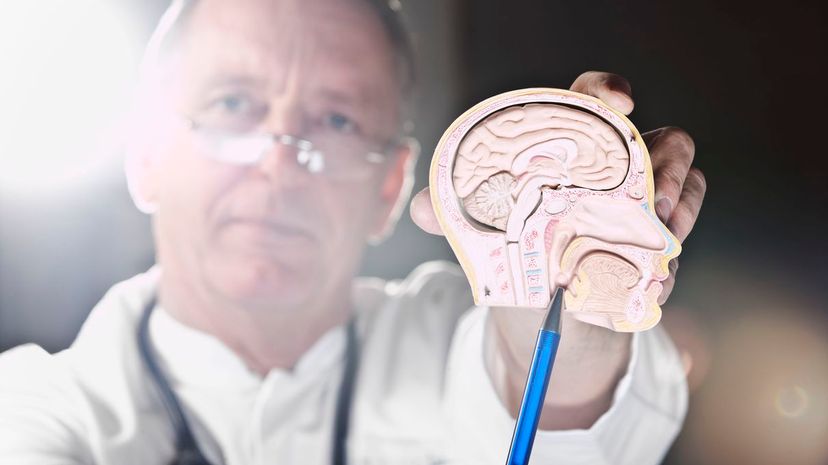
Laryngitis, or inflammation of the larynx, has many different causes but only one solution. The affected person should rest their voices and not talk unless necessary. However, it should be noted that most doctors discourage whispering because it adds unnecessary strain.
Advertisement

Doctors in clinics often employ clinical anatomy as their go-to when it comes to treating patients. Clinical anatomy embraces several branches of anatomy while making it palatable for patients not to be intimidated by a doctor's eye.

Controlling a body is no easy task, which is why the nervous system is divided into three parts. The central nervous system acts as the body's hub with the peripheral nervous system connecting the limbs to it and the autonomic system connecting the organs to it.

Molars are responsible for grinding food into something easy to swallow. Luckily, they have the help of the teeth in front of them (the canines and incisors cut the food, and the premolars start to mash it) to achieve this task.
Advertisement

As we age, the spongy cartilage between our joints wears down. In the case of arthritis, the stiffness and swelling occur because the cartilage has been worn down to the point that it is almost nonexistent.

When open-heart surgery is performed, the surgeon breaks the sternum to get to the organ. The bone will heal itself; however, the patient needs to be careful when coughing or sneezing because the force could refracture it.

If you ever want to feel what cartilage is, check out your nose and the tops of your ears. They're both made of cartilage, and if you're ever planning on getting either of them pierced, be prepared because the pain is more intense than a lobe piercing.
Advertisement

Anabolic steroid use is popular amongst athletes because it boosts muscle mass in a similar way to testosterone. The practice is very looked down upon. In 2007, Barry Bonds passed Hank Aaron becoming the home run king, yet, after it was discovered that Bonds was using steroids, a star was placed next to the record.

The spinal cord is pivotal to movement. If it is slightly damaged, people experience excruciating pain, which could result in surgery, and if a severe injury occurs, it could end up causing paralysis.

A typical male can produce 200,000 sperm a minute; however, as the man begins to age, that number drops. And if that weren't enough, the testicles are responsible for creating androgens, common male hormones that bodies use in development.
Advertisement
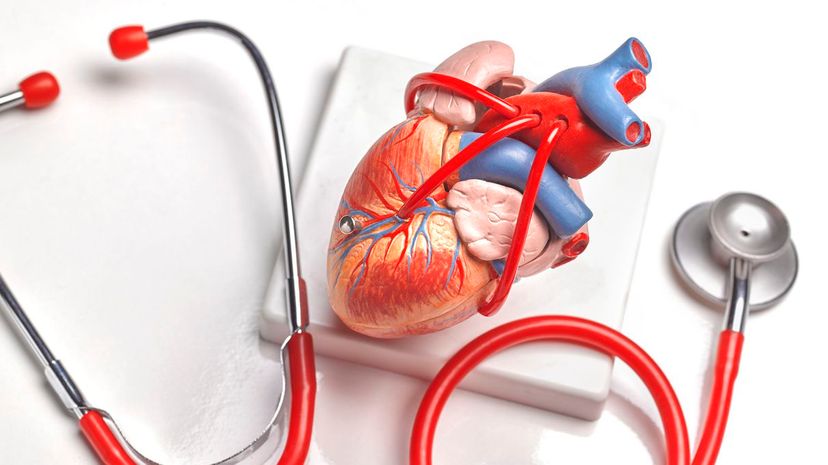
The four chambers of the heart are the right atrium and ventricle and the left atrium and ventricle. Each has its role in getting oxygen into the bloodstream. The left side of the heart distributes blood to the body, and the right side sends blood to the lungs for more air.

If you have blue eyes, you should consider yourself a rarity. In genetics, brown eye alleles are considered a dominant gene, so if you have a parent with brown eyes, it is more likely that the child will have brown eyes as well.

Those of us with breathing issues have faced this nasty cold before. Bronchitis occurs when the bronchi get irritated or infected and usually happens after getting a cold or flu. Smoking can be a cause of chronic bronchitis.
Advertisement
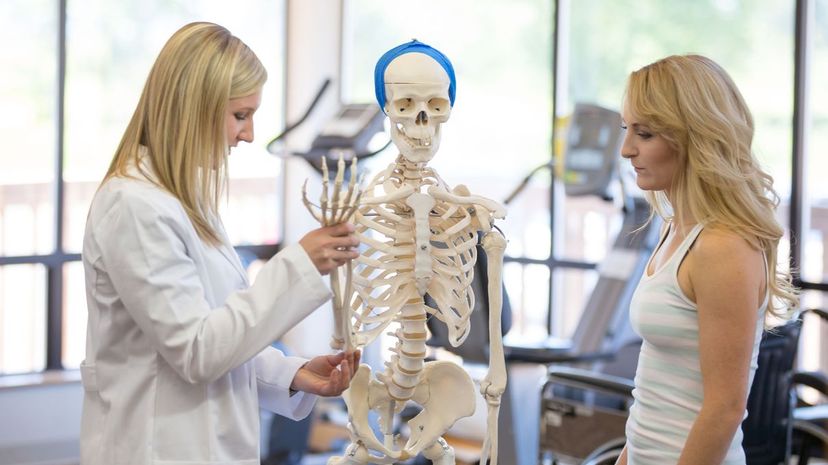
If you thought having a little over 200 bones was a lot, hold onto your hat! When a baby is born, they have 270 bones in their little bodies, which fuse into each other as they grow.

Ear barotrauma may sound downright awful, but we bet you've experienced it. This is when an ear injury happens due to a change in barometric pressure, like when a plane takes off.

If you're looking to study the science behind the miracle of birth, developmental anatomy is the area of anatomy you'd want to explore. Developmental anatomy examines the structural shifts from conception to birth.
Advertisement

Mucus may be a gross and sticky material, but it serves an essential purpose. In addition to being in the nose, mucus is also found inside a woman's cervix, which blocks inferior sperm from fertilizing their eggs.

If discovered at a crime scene, a single strand of hair could leave enough DNA to capture the perpetrator. However, if your DNA is left at a crime scene, it doesn't make you an automatic suspect. Detectives know how to weed out the innocent bystanders.
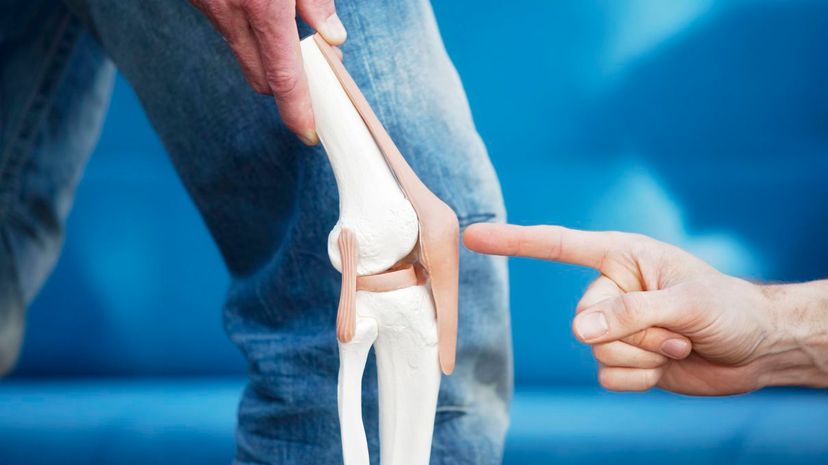
If you've ever wondered how the bones of the fingers are latched together, wonder no more! Ligaments, made out of fibrous material, patch the bones together and with tendons attaching muscles to the fingers, move.
Advertisement

Many of us suffer from breakouts from time to time. This could be for various reasons, including eating greasy foods, stress and hormonal fluctuations. Another factor in having acne is genetics. If your parents are prone to breakouts, then you will be too.

If you have a crush on someone and don't want them to know it, you may want to invest in a pair of sunglasses; looking at someone you find attractive causes the pupils to dilate, which could give you away in a blink of an eye.

When you look at a diagram of a transverse plane, there are a couple of terms you may need to be aware of. If you are looking at a superior section, it is of the top half of the body, and the inferior part is the lower half.
Advertisement

In terms of digestion, the small intestine has an important function: to absorb nutrients into the body. Out of all the organs associated with digestion, the small intestines provide 90% of the digestion in the body.

Also known as teeth grinding, bruxism happens to many of us when we're under stress. If it gets too bad, your dentist may recommend a bite guard. Available at many drug stores, bite guards are easy to use to create a customized fit.

Recently, a study was released indicating that those who had their appendixes removed were at a higher risk of getting Parkinson's disease. However, because the chance is so slim (under 1%), they still encourage appendix removal if it's life-threatening.
Advertisement
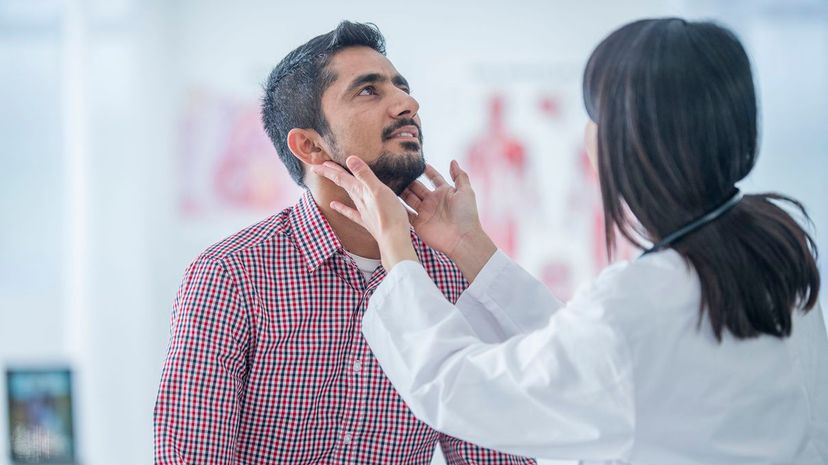
Tonsils are part of the lymphatic system and are often referred to as the first line of defense because of their location: many viruses and bacteria enter through the nose or mouth, making it nearly impossible for the tonsil not to sample whatever passes.

Out of all of the teeth, the incisors have the lowest number of roots. A single root secures the tooth in the mouth, and because humans chew by dragging food across the teeth, the incisors can do their jobs.

If there was any reason to see a doctor if you have a prolonged cough, think about your ribs. If your cough goes unchecked or gets worse, you could end up breaking a rib and ending up in surgery.
Advertisement

Considered one of the strongest tendons in the body, the Achilles tendon attaches the calf muscle to the foot. It is named after Achilles, one of the heroes of the Trojan War, who got struck in the tendon by an arrow.
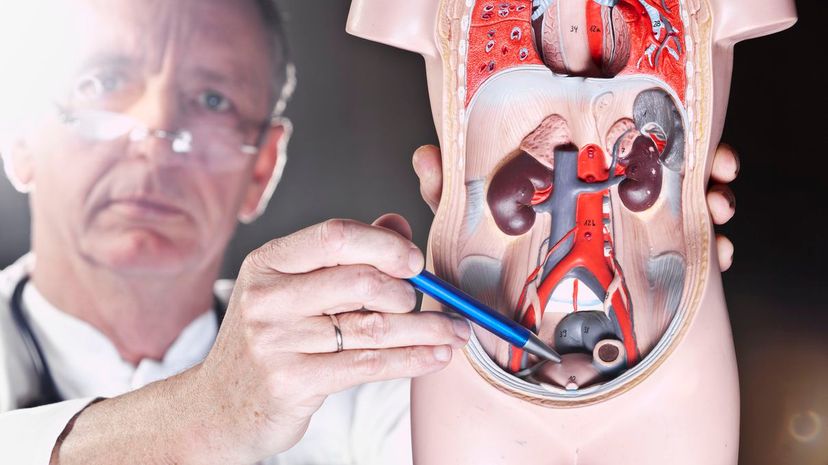
Staying hydrated is essential for keeping the body functioning at its best, and in the urinary system, it isn't any different. If someone produces dark urine, the body is dehydrated, and if it is super light, the body is overhydrated.

Each of the brain's lobes controls different aspects of the body. The frontal lobe is used to understand concepts and to perform voluntary activities. The parietal lobe relays data on temperature and movement, the occipital lobe is responsible for vision, and the temporal lobe helps relate memories to sensory reactions.
Advertisement

Some examples of the body's systems include the circular system, which is responsible for distributing blood throughout the body and the skeletal system, which protects the organs from damage.